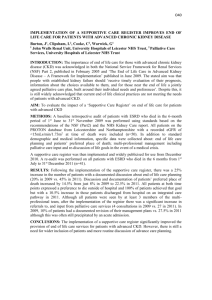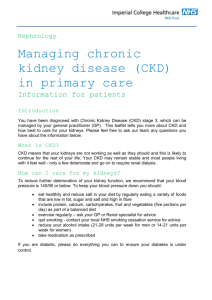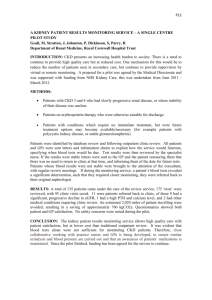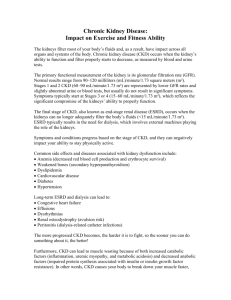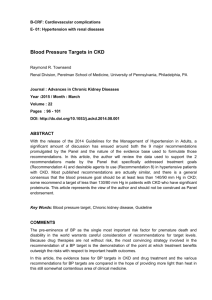Primary Care in High Risk Hypertensive Patients: Chronic kidney
advertisement
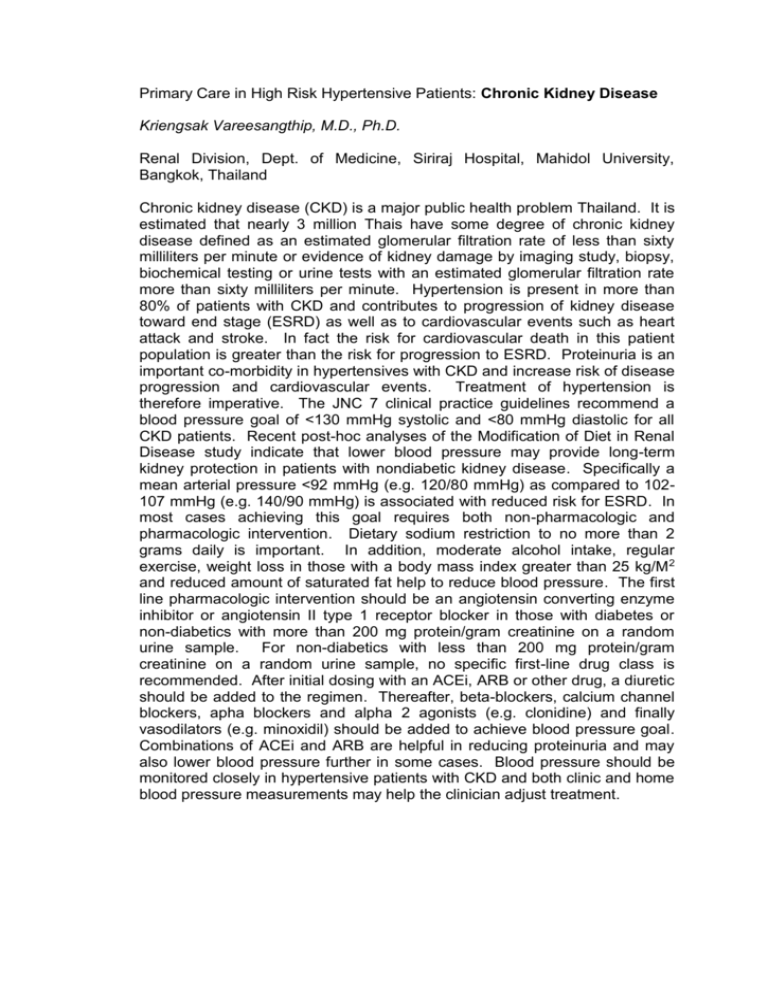
Primary Care in High Risk Hypertensive Patients: Chronic Kidney Disease Kriengsak Vareesangthip, M.D., Ph.D. Renal Division, Dept. of Medicine, Siriraj Hospital, Mahidol University, Bangkok, Thailand Chronic kidney disease (CKD) is a major public health problem Thailand. It is estimated that nearly 3 million Thais have some degree of chronic kidney disease defined as an estimated glomerular filtration rate of less than sixty milliliters per minute or evidence of kidney damage by imaging study, biopsy, biochemical testing or urine tests with an estimated glomerular filtration rate more than sixty milliliters per minute. Hypertension is present in more than 80% of patients with CKD and contributes to progression of kidney disease toward end stage (ESRD) as well as to cardiovascular events such as heart attack and stroke. In fact the risk for cardiovascular death in this patient population is greater than the risk for progression to ESRD. Proteinuria is an important co-morbidity in hypertensives with CKD and increase risk of disease progression and cardiovascular events. Treatment of hypertension is therefore imperative. The JNC 7 clinical practice guidelines recommend a blood pressure goal of <130 mmHg systolic and <80 mmHg diastolic for all CKD patients. Recent post-hoc analyses of the Modification of Diet in Renal Disease study indicate that lower blood pressure may provide long-term kidney protection in patients with nondiabetic kidney disease. Specifically a mean arterial pressure <92 mmHg (e.g. 120/80 mmHg) as compared to 102107 mmHg (e.g. 140/90 mmHg) is associated with reduced risk for ESRD. In most cases achieving this goal requires both non-pharmacologic and pharmacologic intervention. Dietary sodium restriction to no more than 2 grams daily is important. In addition, moderate alcohol intake, regular exercise, weight loss in those with a body mass index greater than 25 kg/M 2 and reduced amount of saturated fat help to reduce blood pressure. The first line pharmacologic intervention should be an angiotensin converting enzyme inhibitor or angiotensin II type 1 receptor blocker in those with diabetes or non-diabetics with more than 200 mg protein/gram creatinine on a random urine sample. For non-diabetics with less than 200 mg protein/gram creatinine on a random urine sample, no specific first-line drug class is recommended. After initial dosing with an ACEi, ARB or other drug, a diuretic should be added to the regimen. Thereafter, beta-blockers, calcium channel blockers, apha blockers and alpha 2 agonists (e.g. clonidine) and finally vasodilators (e.g. minoxidil) should be added to achieve blood pressure goal. Combinations of ACEi and ARB are helpful in reducing proteinuria and may also lower blood pressure further in some cases. Blood pressure should be monitored closely in hypertensive patients with CKD and both clinic and home blood pressure measurements may help the clinician adjust treatment.


